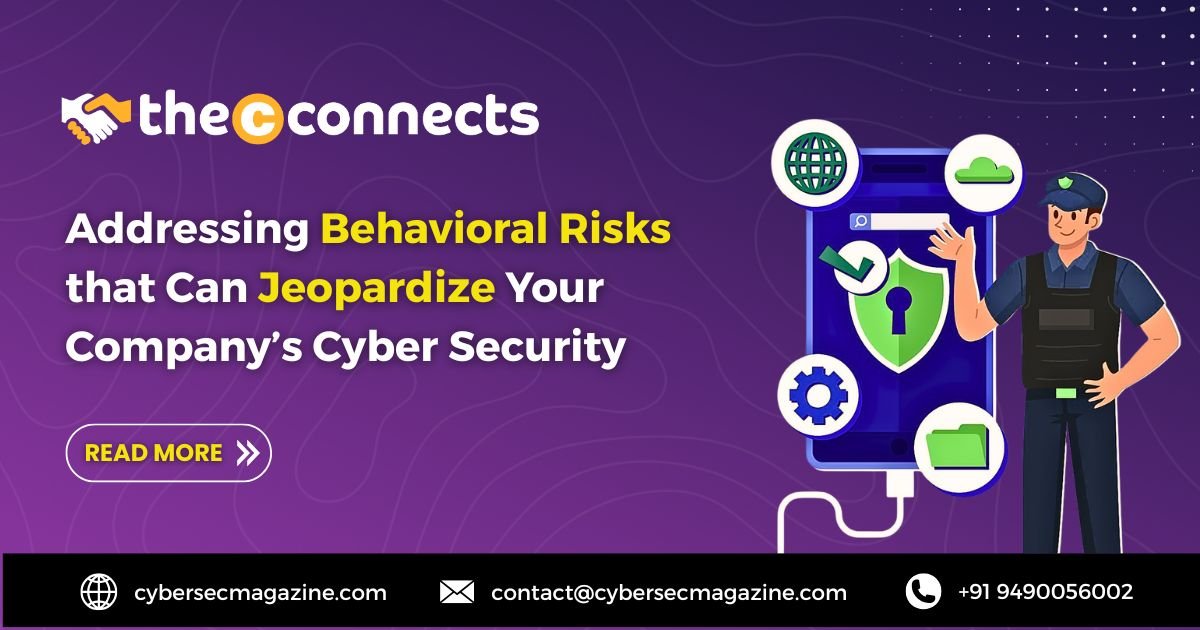With the ever-present threat of data breaches, companies invest heavily in sophisticated technologies and security frameworks to safeguard digital assets. Expanding networks, cloud platforms, and connected systems create new opportunities, but they also broaden the attack surface for cybercriminals.
In addition to defending against technical intrusion, an equally critical – but less predictable – vulnerability is the workforce itself. Whether it’s clicking on a malicious link, mishandling login credentials, or disregarding established protocols, human error frequently undermines even the most advanced cybersecurity solutions.
Recognizing the role human behavior plays in cybersecurity, and how you can address it effectively, can help you strengthen the defenses cybercriminals often strike first.
Why Are Employees the Weakest Link?
Human decisions are shaped by biases, habits, and emotions. Both at work and at home, these subconscious influences create openings that cybercriminals can exploit – often without us even realizing the error we’ve made.
- Cognitive biases can cause employees to overestimate their ability to recognize scams or suspicious activity.
- Routine shortcuts like reusing simple passwords or failing to update passwords regularly can compromise otherwise secure systems.
- Emotional triggers like urgency, curiosity, or fear of missing out (FOMO) are easily manipulated through tactics like phishing or social engineering schemes.
For example, a single click on a malicious email attachment or a weak password to an important system can compromise an entire network. Attackers thrive on exploiting these tendencies, making individual employees a prime entry point for security breaches.
Common Employee-Driven Security Risks
Many companies protect critical systems by investing in more advanced security tools or creating more stringent protocols around access. While this is important, you also need to empower your workforce to reduce risks from human error:
- Weak password habits: Most employees have regular access to online systems and applications. Juggling multiple logins can tempt employees to use predictable or repeated passwords. This convenience, though understandable, creates significant vulnerabilities in your system if you don’t address them.
- Exposure to social engineering: Even with AI-driven security solutions and defenses, humans remain susceptible to manipulation. Attackers know this and can impersonate trusted sources to trick employees into revealing sensitive information, such as login credentials that offer an entry into the system.
- Limited cyber awareness: Employees who don’t fully understand the evolving threats may not recognize suspicious behaviors or the consequences of seemingly minor, innocent actions, like accidentally disclosing sensitive business information.
- Insider threats: Security risks don’t always come from external actors. These risks can also come from the inside, including current employees, former employees, or third-party vendors. Whether deliberate or accidental, internal risks can be a significant threat to businesses because they’re more challenging to identify and mitigate.
Building a Culture of Security
Cybersecurity is not solely on the IT team. It’s an organizational priority and every employee has a part to play. You can better protect your company if you include cybersecurity into every aspect of your daily operations.
Prioritize Cybersecurity Training
It’s crucial to prioritize employee education and best cybersecurity practices and secure protocols for managing personal login credentials, accessing email, and reporting suspicious activity.
Regular education sessions ensure employees understand threats, safe practices, and compliance obligations. This includes training employees in specific data security and compliance initiatives to ensure that the business meets regulatory requirements.
Training and education should also include best practices for common business technologies and new applications like AI-enabled tools. These situations have specific security precautions to be aware of and ethical considerations regarding data usage.
Allocate Resources Strategically
Cybersecurity threats are becoming more sophisticated, so you need to assess your risks along with them. The threat level for different areas can change as your business grows or evolves, turning what was once a minor risk into a considerable vulnerability.
Regular risk assessments of vendors and penetration testing can offer a glimpse into your current systems, networks, and processes to identify weak spots and vulnerabilities that need to be addressed.
Build a Cybersecurity Action Plan
While it’s important to implement various security measures like risk assessment, access control, and penetration testing, you also need to acknowledge that not all risks can be avoided completely. Cybersecurity strategy is as much about responding to breaches as defending against them. A cybersecurity action plan is important to minimize disruptions and protect business continuity.
Your cybersecurity strategy should have clear procedures for recognizing, mitigating, and responding to security incidents, complete with steps for alerting relevant parties and safeguarding any evidence that may be necessary for the investigation.
Adopt a Strong Security Posture
Building a strong cybersecurity posture is about more than just implementing advanced tools and technology. You also need a team of informed, vigilant people. While your employees can be your greatest cybersecurity vulnerability, with the right training and mindset, they can become your strongest defense.
Author Bio Information
Author Bio:
Nazy Fouladirad is President and COO of Tevora, a global leading cybersecurity consultancy. She has dedicated her career to creating a more secure business and online environment for organizations across the country and world. She is passionate about serving her community and acts as a board member for a local nonprofit organization.




